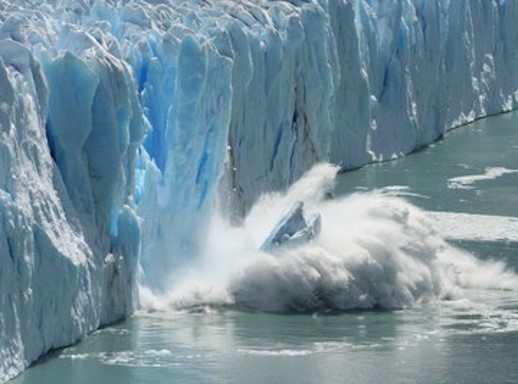Leap seconds have been added to our timekeeping occasionally to ensure it remains consistent with the planet’s rotation. Unbeknown to most people, Earth experiences variations in rotation and climate change appears to be a factor.
As land ice on Greenland, other Arctic islands, and Antarctica melts, the water enters the ocean. This, not only causes sea levels to rise but also redistributes the planet’s mass with the added water giving Earth an expanded waistband at the equator.
An article appearing on March 27, 2024, in the journal Nature, describes how the atomic clock based on the precise vibrations of cesium atoms and used by computing networks to keep time can go out of sync with Earth days bound to the planet’s rotation.
Since 1972 a method to keep the two in synch has added leap seconds 27 times with the last added on December 31, 2016. Meanwhile, Earth’s spin continues to slow by a couple of milliseconds (0.001 seconds) per century.
There are fluctuations. For example, June 29, 2022, saw length of day (a term scientists use for precise timekeeping) equal to one planetary rotation faster by 1.59 milliseconds. This marked the shortest day on record since the atomic clock was adopted.
Today, the world’s official time is Coordinated Universal Time (UTC). It is used to regulate clocks across time zones around the planet. UTC replaced Greenwich Mean Time (GMT), a term still used, and facilitates international communication, navigation, scientific research, and commerce.
Before the discovery that climate change was altering the speed of Earth’s rotation, the known physical forces impacting length of day were the Moon, the Sun and the spin of the planet’s solid iron core. The Moon causes ocean tidal bulges which subtly change the planet’s shape. The Sun’s gravitational pull causes the side of Earth facing it to bulge affecting the spin. Recently, scientists discovered that Earth’s solid core spins at a different rate than the planet’s surface and appears to be slowing down. The consequences of the latter have yet to be determined related to changes in length of day.
Until now, melting ice from atmospheric warming had never been considered a factor affecting length of day. Now geophysicists are concluding that human-caused climate change may play a bigger role in altering Earth’s spin rate. Instead of adding leap seconds, scientists are predicting we may introduce negative seconds to account for the planet’s changing rotation.
One of the Nature study article authors, Duncan Agnew, a geophysicist at the University of California San Diego, told CNN “Part of figuring out what is going to happen in global timekeeping … is dependent on understanding what is happening with the global warming effect …To me, the fact that human beings have caused the rotation of the Earth to change is kind of amazing.” Stated Ted Scambos, a glaciologist at the University of Colorado who is not one of the paper’s authors, this could cause “a yikes moment for some computer applications.”
Our planet is more dynamic than previously thought. If melting ice speeds up rotation, what would massive amounts of ice in the Northern Hemisphere during the last Ice Age do? The flattening of the poles would have slowed the planet’s rotation.
Is anthropogenic global warming the only human influence on Earth’s spin? Last year, the American Geophysical Union published a letter in a scientific journal stating that humans had been using so much groundwater in the last two decades it was causing a shift in Earth’s mass causing the poles to move nearly a metre in the last two decades. In other words, human activity was tilting the planet.
















